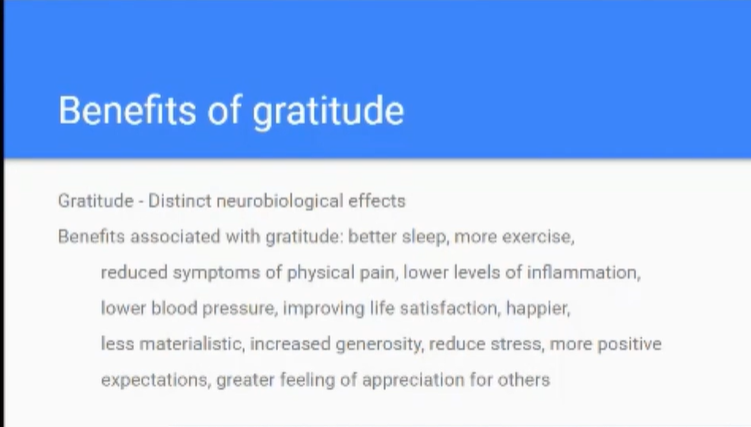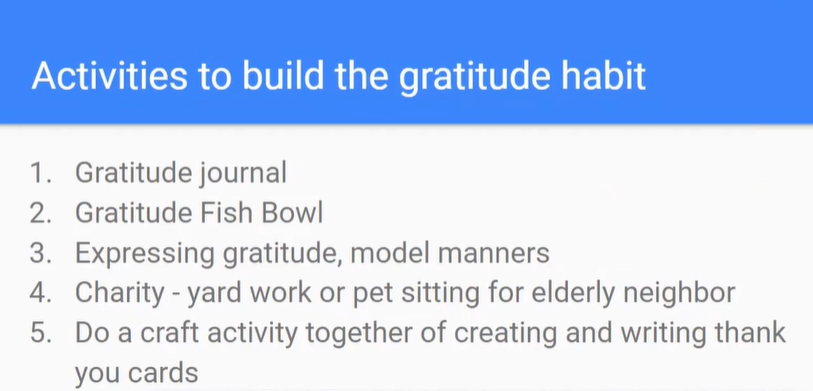How to Teach Our Children Gratitude: Reflection on Young Mothers (YOMO) Program
Mrs. Deshotel during the webinar explaining about the benefits of gratitude.
Even though I’m not a mom of young children, I registered to the webinar on December 8 on “How to Teach Our Children Gratitude” because I hoped to gain some insights on how I can help my adult son to show more gratitude in his actions and words. To my surprise, I found several other older moms and grandmothers on the webinar. It’s never too late to help our kids learn gratitude!
Mrs. Elizabeth Deshotel’s presentation focused on how an attitude of gratitude and the daily practice of being grateful transforms one's mental outlook and health. One of the clips she showed emphasized three steps for cultivating a gratitude lifestyle: emote, extend, exercise.
The first step, emote, is to really focus on the feeling of gratitude, not just the expressing of it in words or thoughts. The emotion of feeling grateful should also be connected because it is the emotion of gratitude which has the transformational effect, otherwise it can become empty words. The second step is to extend, meaning to be grateful for other people and things outside of ourselves and to express it. The final step is exercise. We learned that the repetitive action of gratitude has a transformative impact on our brain, can change memory, and can even free us from emotional pain. We learned that scientific research shows that people practicing daily gratitude makes us happier, helps us to achieve our goals, and even improves our health. Being grateful increases joy in us and feeling joyful automatically creates joy in others.
Of course, she also gave some examples of how to achieve daily exercising, such as a gratitude journal, or expressing gratitude at the dinner table and before we go to sleep. Many of the examples she gave could easily be practiced in families with young children. I appreciated that we had time to practice right then and there, following a gratitude template designed by Marie Folio. We were assigned break out groups and filled in the following with personal examples: “[Another person’s first name], I so appreciate your [quality/trait]. I say that because [specific details and evidence].”
And so how do we teach gratitude to our kids? By living in gratitude as parents, we powerfully model behavior for our children. By practicing it myself, I impact the environment I am in: my family, my son, and beyond. I realized by listening to the presentation living in gratitude is more than modeling, it is transforming myself. And I can attest that since I expressed my gratitude to others once a day during my morning devotion, it improved my relationship with my husband and I see small changes in my son as well.
Template anyone can use to express gratitude to others.
Thank you WFWP, for developing this new program YOMO to empower mothers. Mothers have such a huge impact on the most essential life's environment: the family. Thank you, Mrs. Deshotel, for sharing what you learned when you did research in preparing for this webinar. I loved the clips shown, especially the one on how gratitude impacts the neuroplasticity of our brain and improves our social intelligence. Wow. So happy I decided to take one hour to listen.
To watch the recording please click here.
If you would like to help support many more programs for young mothers, consider making a donation to WFWP today.





